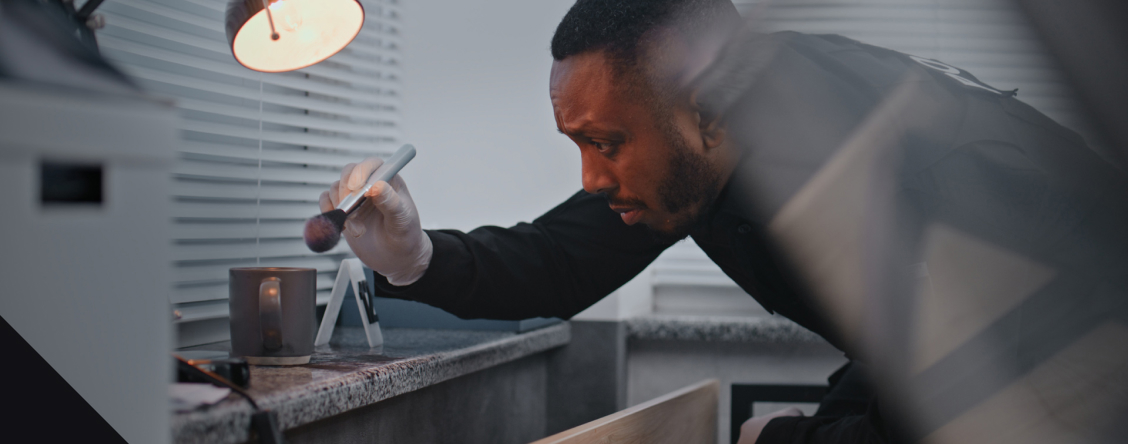Fingerprint
Recognition
Master every print. Match latent fingerprints in seconds, and partial, single, and tenprints in milliseconds.

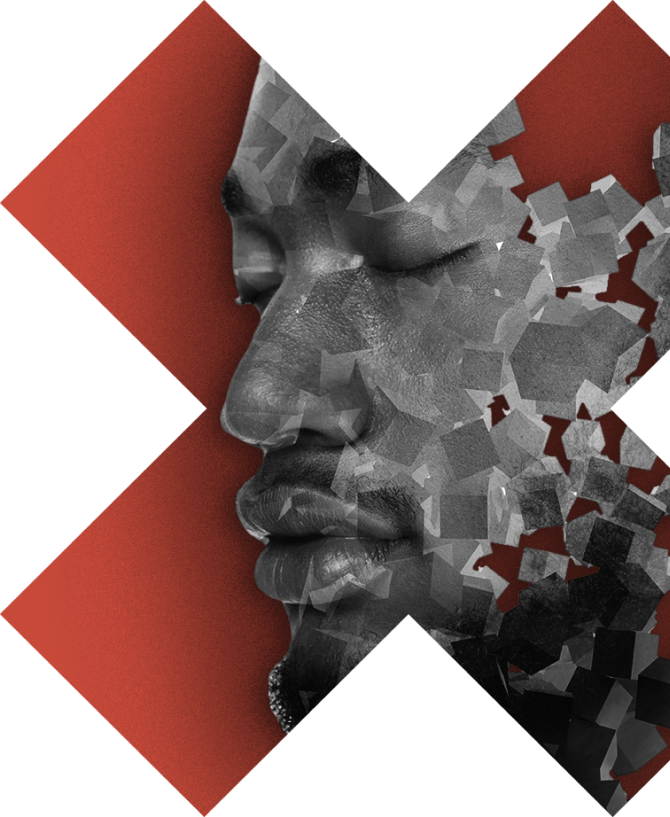
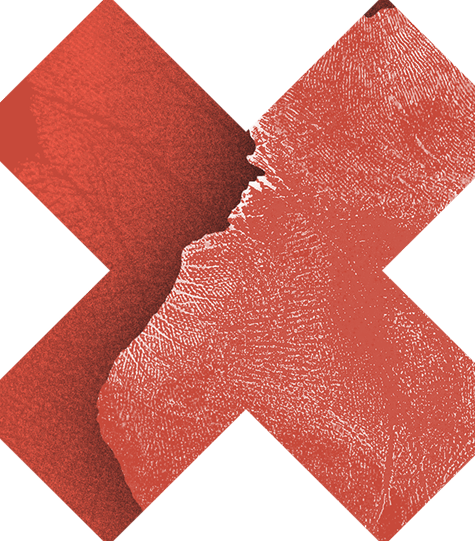
Lead the way with the gold standard in biometric matching.
Latent Prints
Real-time 1:1 and 1:N latent matching for law enforcement and forensic investigation. Latent prints are friction-ridge impressions of a person’s fingers or palms, left unintentionally at crime scenes. They are often incomplete and invisible to the naked eye.
Tenprints
Standardized tenprint cards ensure detailed ridge patterns and minutiae points are fully captured and searchable. These unique biometric profiles provide unparalleled identity verification for booking, background checks, and ongoing casework.
Palmprints
Expanding on fingerprints, palmprints enrich your identification capabilities. The intricate details of palm structure offer distinguishing biometric minutiae to further identify individuals.
ROC ABIS
Supercharge your biometric identification. ROC ABIS is powered by industry-leading algorithms, streamlined workflows, and highly scalable ROC architecture designed to maximize efficiencies and minimize costs.
Top ranked by NIST.
#
1
#1 global fingerprint recognition provider in combined accuracy and efficiency. Ranked by NIST
#1 most sensor-interoperable algorithm on the planet.
#1 most accurate performance on cross-sensor IARPA Nail-to-Nail evaluation sets.
#1 most efficient algorithm with search speeds 10,000x faster than industry standard.
#1 smallest template size – 160x smaller than the next competitor.
LATENT MATCHING
Pinpoint latent prints in seconds.
Satisfy your need for speed with the world’s fastest latent fingerprint matcher. Transform the future of law enforcement with real-time intelligence, on-the-spot, on-device matching, and rapid response. Because faster fingerprint recognition matters.
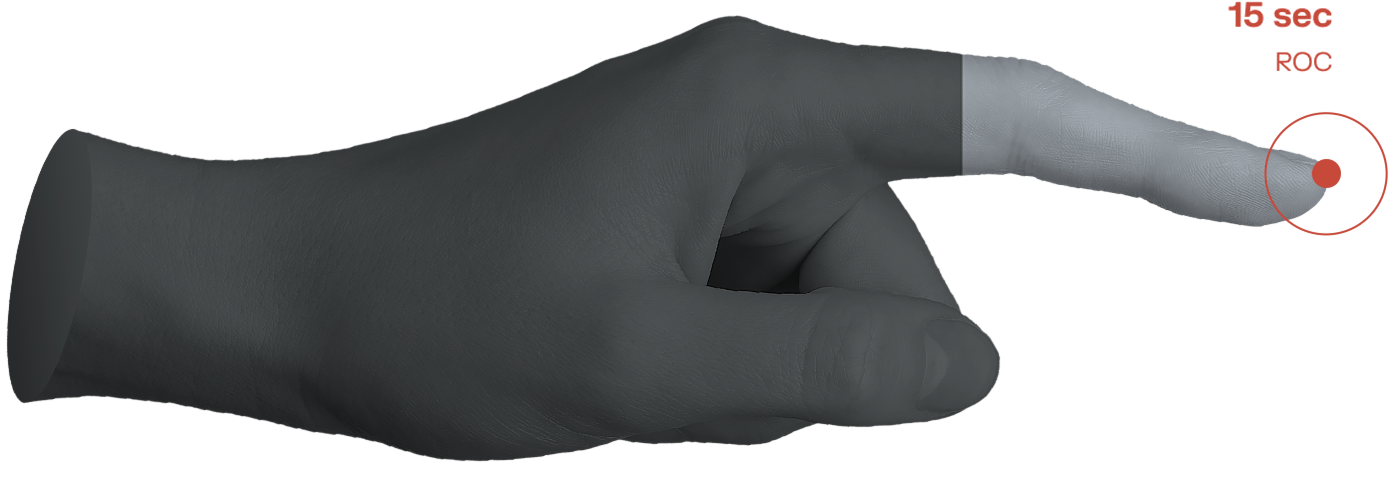
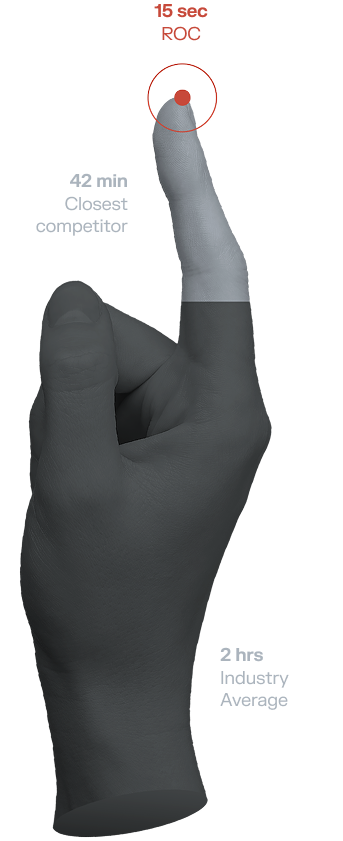
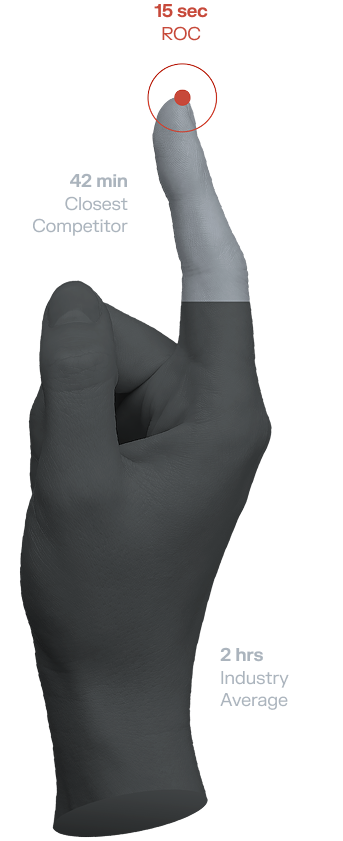
2 hrs
Industry Average
42 min
Closest Competitor
USE CASES
Access Control
Modernize Physical Security
Traditional access control methods, such as key cards and PINs, are easily lost, stolen, or shared. ROC fingerprint recognition is the secure, reliable, and user-friendly solution. By verifying individuals via their unique biometric identifiers, you’ll ensure that only authorized personnel gain entry to secure areas.
Banking & Finance
Safeguard Financial Services
In today’s fast-paced world, ROC fingerprint recognition enables global banks and FinTech companies to securely identify customers, prevent fraud, and stay on top of evolving threats. With NIST-ranked biometrics from ROC, financial institutions can conveniently verify users and ensure compliance by adhering to the strictest ethical, regulatory, and data privacy standards.
Identification and Authentication
Empower Digital Lives
Fingerprint biometrics commonly enable access to everything from personal devices to bank accounts. As technology reshapes our daily experiences, ROC fingerprint recognition ensures our data and devices stay safely in our control through frictionless and inclusive identification solutions – unlocked with a simple touch.
Law Enforcement
Advance Public Safety and Trust
The future of law enforcement is built on ROC. Adopted by top law enforcement and government agencies, ROC multimodal biometric and ABIS solutions power time-sensitive, large-scale investigations worldwide. We support community safety and protect our civil rights through American-made, globally trusted biometrics, backed by responsible AI governance, data privacy practices, and algorithms free from racial bias.
Healthcare
Promote Better Health Outcomes
From frictionless visitor management to AI threat detection, Vision AI is playing a larger role in value-based healthcare. ROC fingerprint matching promotes better health outcomes by securing facilities, identifying patients, and streamlining and personalizing care delivery. In medical settings where accuracy is paramount, we ensure the right care reaches the right person at the right time.
Border Control
Secure Borders More Effectively
When it comes to safeguarding our nation’s borders, face recognition and fingerprint matching empowers border control and immigration services to swiftly authenticate travelers, red-flag known individuals on watch lists, and deter unauthorized border crossings. ROC biometric solutions are relied upon by the U.S. military, Department of Defence, and local and state law enforcement.

Deployed by
DOD | DOS | US NAVY | US MARSHALS | FBI
PRODUCTS
The Future of ABIS
Supercharge your biometric
identification with the agile,
affordable, American-made ABIS.
PRODUCTS
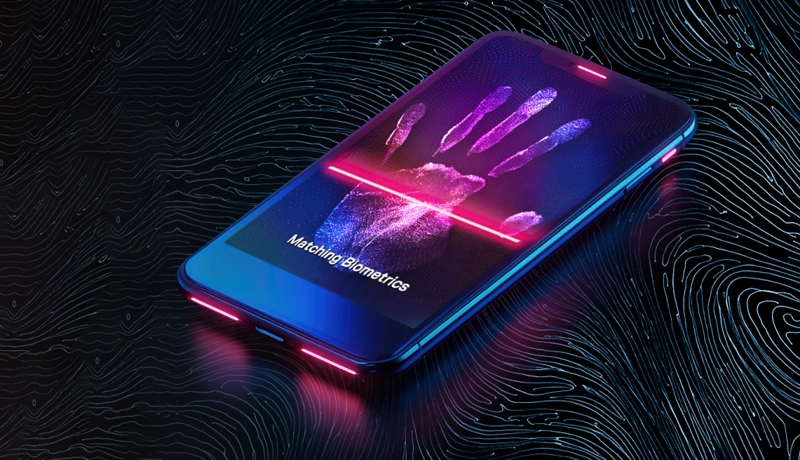


The Future of ABIS
Supercharge your biometric
identification with the agile,
affordable, American-made ABIS.


Reimagine What’s Possible
Tap into the power of the all-in-one ROC SDK. Integrate game changing biometric and Vision AI capabilities with just a few lines of code.
WHY ROC
Visionary AI
We build Vision AI into a force multiplier for defense, national security, and digital commerce to augment human capabilities and serve the greater good.
01
Fully multimodal
The most robust biometrics arsenal under the sun. Next-gen Vision AI, ABIS, and video intelligence powered by #1 global NIST-ranked algorithms.
02
Next-gen efficiency
Speed is a financial advantage. Scalable algorithms and modular frameworks reduce costs by simplifying systems, streamlining development, and unleashing peak cloud performance.
03
Highest fidelity
Powerfully lightweight algorithms built on massive datasets for precision applications with near zero bias. Optimized for mobile and edge. Deployed with a few lines of code.
04
Easy to work with
Focus on innovation, not integration. With personalized support, flexible pricing, and cross-platform interoperability, ROC SDK has everything you need to ship with confidence.
fingerprint is
American.
Build with ROC.
Schedule a free trial or demo.
FREQUENTLY ASKED QUESTIONS
How does Face Recognition work?
This is a loaded question! Although it’s hard to answer this easily, our Chief Scientist and Co-Founder, Brendan Klare, elaborates on how Face Recognition software works and some of its use cases in this blog post.
The long story short is that an algorithm injests a photo or video, identifies face(s), and generates a face template, which is a numerical encoding of a face. From there, the template can be compared to another template to determine if they are the same identity (1:1), or it can be compared against a large set of templates to determine if the same identity appears in the set (1:N).
Each Face Recognition algorithm vendor has a different and proprietary approach; this is why each vendor has different levels of performance across various factors. To get a better understanding of the differences in performance between Face Recognition algorithms, the National Institute of Science and Technology (NIST) conducts ongoing 1:1 and 1:N Facial Recognition Vendor Tests (FRVT), which have become the go-to sources for Face Recognition benchmarking across a wide range of conditions and datasets. Here, you can find the most recent NIST FRVT 1:1 and NIST FRVT 1:N reports.
NIST also produces individual “report cards” for all Face Recognition vendors. ROC.ai’s 1:1 and 1:N report cards can be found here.
What sets ROC.ai apart?
ROC is the only Western-Friendly Face Recognition provider (developed entirely in the USA) that NIST FRVT ranks in the top 10 for accuracy and efficiency across all use cases.
Don’t just take our word for it! See the latest NIST FRVT 1:1 and 1:N reports, as well as ROC.ai’s individual 1:1 and 1:N report cards for more details about our performance.
ROC is hardware agnostic which makes us very cost effective, whereas a lot of providers have costly hardware requirements.
ROC's lightweight software package and tiny template size allow for deployment on-edge or in the cloud using minimal computing resources, hence saving the customer from excessive and exorbitant hardware costs.
What is a face template?
What OS requirements do your products have? What architectures are supported?
Do you process on the edge or on the cloud?
What types of use cases do you support?
What is the largest gallery of face images that ROC.ai can support?
Do you work with masks?
Does your face recognition algorithm work on children?
- Rapid physiological development – Early adolescence is a time in physiological development when the face and cranium experience major changes.
- Availability of data – Face Recognition algorithms exhibit high performance on population segments on which they have been trained. Training data for minors is not as readily available as data for adults.
- The time span between enrollment and subsequent matching is especially important to consider when Face Recognition systems are used with younger populations. Overall, we estimate that Face Recognition works well on people over the age of 11.
How good are ROC.ai’s Face Recognition capabilities?
We recommend consulting the NIST FRVT 1:1 and 1:N reports, which presents a full-picture of each Face Recognition algorithm vendor’s performance, as well as how they stack up against each other.
